"We knew that we had indeed done something that was very different and very exciting, but we still didn't expect it to have something to do with physical reality." -Gerald Guralnik, co-developer of the Higgs mechanism
Might as well make this entire week "Higgs week" here on Starts With A Bang, given how important yesterday's discovery/announcement was! It isn't every day, after all, that you see a theoretical physicist on the 7PM news. (Video here.)
(So proud of Portland, OR's local TV station, KGW NewsChannel 8, for being willing to promote science to the whole city and have me on last night!)
Let's just take a little time today -- now that we've confidently announced the discovery of the Higgs -- to recap what we now know.
All the matter we know of is made out of quarks and leptons of various types, with the most common being the up-and-down quarks (that bind together to make protons and neutrons) and electrons (that bind with nuclei to make atoms). There are heavier fundamental quarks and leptons that will decay into the light ones with very short lifetimes, but they're just as fundamental to the Universe as the ones that make us up. All quarks and leptons have an intrinsic angular momentum -- known as spin -- equal to Planck's constant (ħ) divided by 2.
There are also the gauge bosons: the fundamental particles responsible for the fundamental forces. There are the gluons, responsible for the strong force holding atomic nuclei and individual nucleons together, the weak bosons, responsible for radioactive decay and neutrino interactions, and the photon, responsible for electromagnetic interactions, radiation, and light. All of these gauge bosons have a quantum mechanical spin of Planck's constant (ħ), double the value for quarks and leptons.

Image credit: curved spacetime, courtesy of http://einstein.stanford.edu/.
On the level of individual particles, we do not have a complete understanding of how gravity works. Our best theory for that is Einstein's general relativity, which treats space-time as a fabric, and where matter and energy are responsible for curving this fabric. The matter and energy in the Universe determine the shape of the fabric, and then the particles in the Universe follow the path determined by that fabric.
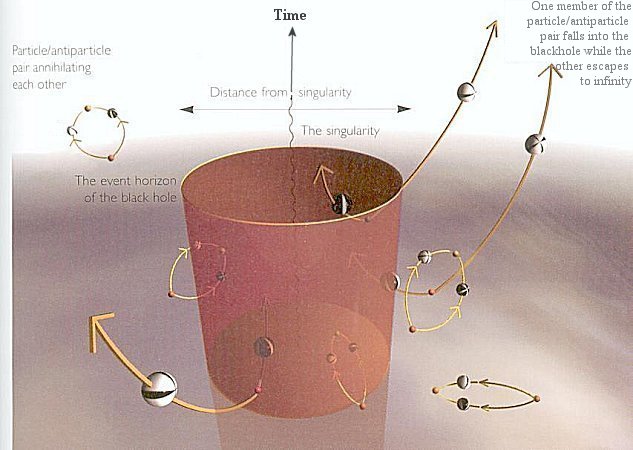
Curved spacetime is necessary for understanding quantum effects like Hawking radiation. Image credit: http://universe-review.ca/.
The shape of the fabric is also important for quantum field theory; all of these particles we know of exist and interact in this curved spacetime, and the shape of this spacetime must be taken into account to get the correct predictions for the behavior of particles in the Universe. That's our best understanding of gravitation.
And finally, as of yesterday, there's the Higgs.
The first and only fundamental particle with no spin. The particle that comes from the mechanism responsible for the masses of all the other fundamental particles, including the Higgs boson itself. The final piece of the standard model puzzle required to explain the strong, weak, and electromagnetic forces and all of the particles therein.
It took us decades of recreating temperatures and energies here at particle accelerators on Earth not found anyplace else to figure this out. The conditions we create in our most powerful accelerators are not found in the center of the Sun, nor in the central core of the Milky Way galaxy, nor around neutron stars and black holes, nor in the cosmic supernova explosions that give rise to all the heavy elements.
These conditions have not existed* in the Universe, in fact, since the very early stages of the Big Bang, when the Universe was less than a microsecond old!
But yet, here we are, having successfully accelerated protons up to a record 299,792,450 m/s, just 8 m/s shy of the true speed of light, and collided them with protons moving the same speed in the opposite direction. Do this billions upon billions of times with a giant particle detector around the collision point, and on very rare occasions, you'll be fortunate enough to create a Higgs boson, whose decay remnants we can detect.
And now, at long last, the Higgs boson -- the last undetected particle from the standard model -- has been discovered. We've measured its mass and its spin, but not its width or its lifetime, yet, and there are still a bunch of unanswered questions. But for now, at least, I'm still celebrating the one question we did answer: the Higgs mechanism is correct, the Higgs boson (a fundamental, spinless scalar particle) does exist, it has a mass of 125-126 GeV, and the standard model is now complete!
We'll take a look at the unanswered questions -- and what's next for physics and the LHC -- very soon, but in the meantime, enjoy the continue Higgs-celebration, and if you've made it this far, enjoy my appearance on yesterday's evening news!
* -- Okay, so occasionally there are ultra-high-energy cosmic rays that are energetic enough to produce a particle such as this. But they're extremely rare and their origin is not understood, so for all intents and purposes, these conditions don't exist in the Universe today.
- Log in to post comments

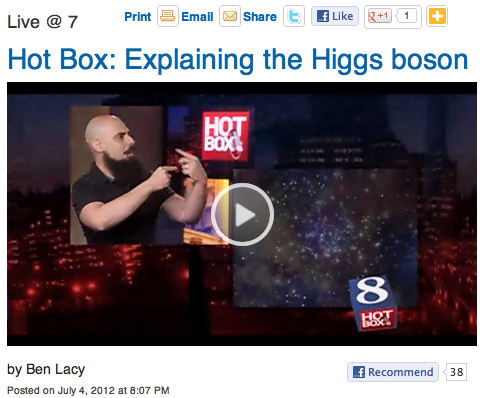

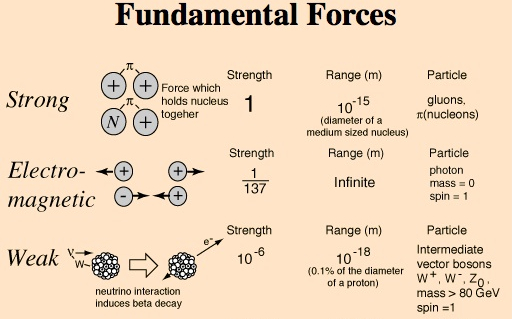
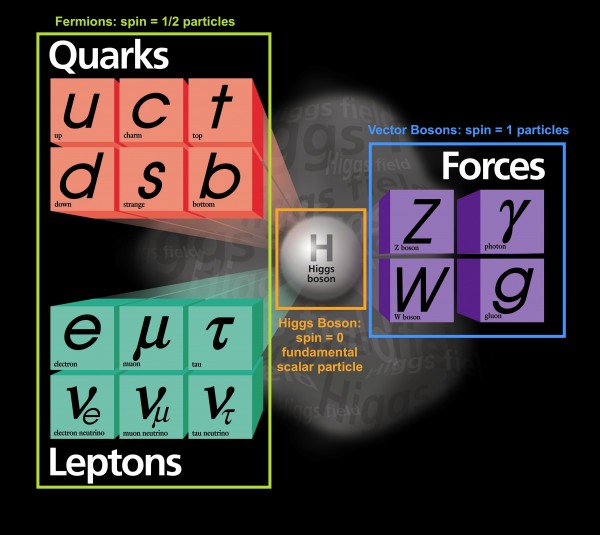
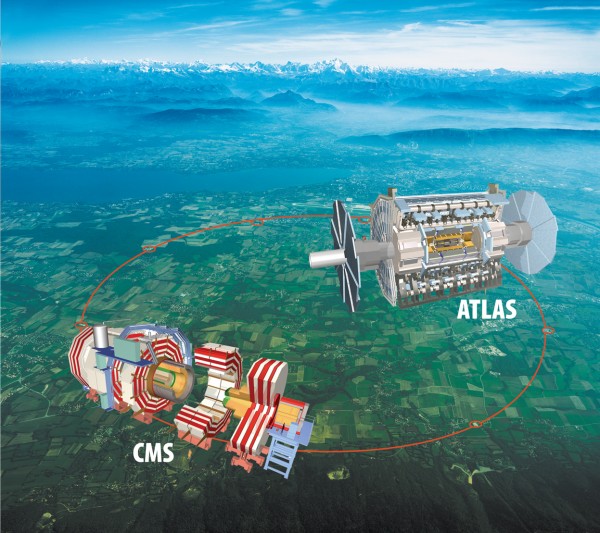
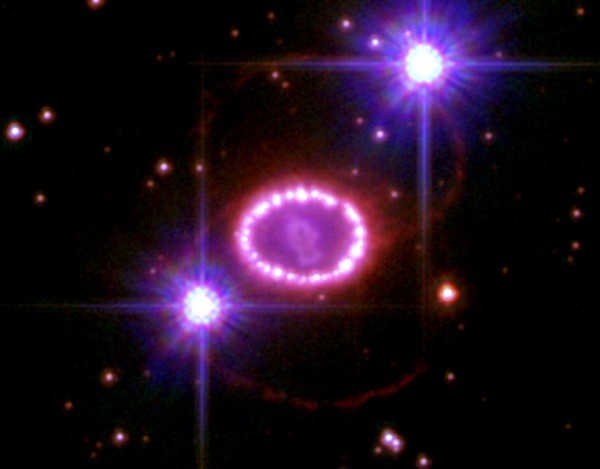
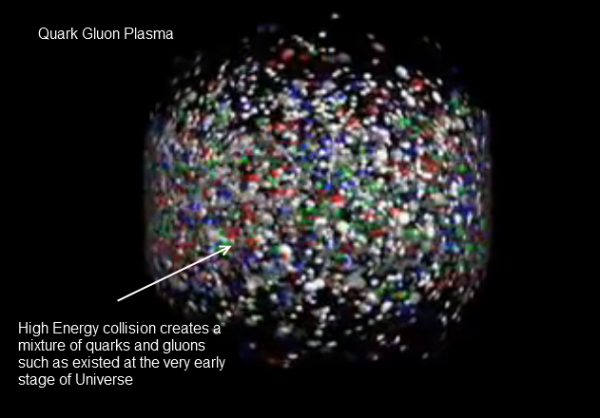
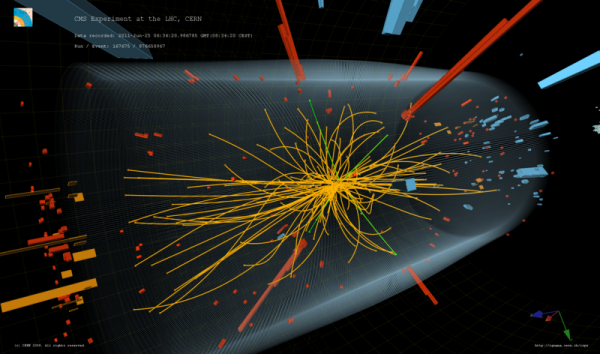
"... These conditions don’t exist in the Universe today."
Woody Woodpecker uses a high frequency of 'pecking' to hammer through wood, cause one rare 'peck' now and than wouldn't get the job done. So one question regarding the safety of this project, how can one honestly compare this machine that creates these unique disturbances in the fabric of spacetime at an amazing high rate with one rare 'peck' here and there generate by cosmic rays, isn't there a dicrepancy in the LSAG-report?
Chelle - one thing that you're missing is that the LHC isn't hammering away at the same small area of space-time. Along with the rest of the solar system, it's moving through space at around 250 km/s relative to the centre of mass of the milky way, which is itself moving at somewhere in the hundreds of kilometres per second.
And the conditions are recreated throughout the galaxy far far more frequently and therefore if the chance for something terrible happening were not practically zero, we'd have seen evidence of it now.
The chance of a problem could be likened to chelle quantum tunnelling 40ft into the ground, thereby appearing encased in solid rock.
Yours is another case of "OMG I don't understand, but I've seen many SF movies where the lab coat wearing scientist brings about the apocalypse, so that must be what's going on here!!!!"
A couple of questions come to mind: 1) How do you detect spin, and how does it affect the particles? 2) Why do some forces act over an infinite range, and some only a short distance? Is there some kind of boundary (force shield! :0) )that stops the force operating?
wow
What part of ".... these conditions don't exist in the Universe today" (Ethan) is consistent with "the conditions are recreated throughout the galaxy far more frequentely" (you)? bc
@Tristan,
The "moving through space at around 250 km/s" is a valid argument, for not pecking a hole in one specific place IN the fabric of space-time. But it is clear and proven since yesterday, that there is a Higgs-field trough which we all are moving at 250 km/s. The question now is; is a part of this Higgs-field moving along with us? Second, as described in that Newscientist video that OKThen yesterday linked to; "the Higgs boson is simply a particle which is an excitation of the everywhere permeating Higgs-field". Now lets look at the analogy that Ethan yesterday brought up that the Higgs field is like water, and parts of atoms absorb this water or at least it attaches itself to the particular parts giving it weight. So one could say that by continuously having a high frequency and density of collisions at one specific place (cause they are also moving along at 250 km/s) that we are continuously boiling up the water that surounds that place the place of impact, and there are two such places at the LHC: ATLAS and CMS. The question is could this continuously shaking up of matter in the surrounding area of those collision points be like boiling potatoes or whatever until the point that they are done, weakening the structures of the atoms, so they all start losing mass, causing de-composure, or basically combusting a whole bunch of matter at once?
@Wow,
- "And the conditions are recreated throughout the galaxy far far more frequently and therefore if the chance for something terrible happening were not practically zero, we’d have seen evidence of it now."
That is correct, globally these conditions happen more frequent, but not at on specific spot, there is a density difference, that is huge (10¨9 per cm^2), this is what I mean with the 'discrepancy'. On could compare it with a magnifying glass, it also bundles light that is normally 'safe' in one specific spot generating heat much higher than normal, just like the LHC does, and generating turning it into the fire-starter tool that it is.
- "Yours is another case of “OMG I don’t understand, but I’ve seen many SF movies where the lab coat wearing scientist brings about the apocalypse, so that must be what’s going on here!!!!”
Huh, no sir. My motivation is quite clear, I see a lot of sparks so I wonder couldn't this experiment ignite something?! So I look how a fire starts, and the process of combustion is often started by shaking up matter due to friction and/or heat. I search for similarities, and I can find here a thing or two. I know that it's perhaps too far fetched (SF) … but still a hazard worth considering imho, that's why I'm asking. :mrgreen:
daven:
1) First Question, First Part:
Short answer: It's similar to how the Higgs and other fundamental particles got detected - that is, by building particle colliders, plugging them in, causing particle collisions, and observing and analysing those collisions for secondary phenomena, the production of which leads to the inference of spin. In the case of Higgs, the scientists involved in ATLAS and CMS were looking for decay products in a certain distribution. In the case of spin, scientists look for the secondary phenomena of magnetic resonance.
Longer answer: http://en.wikipedia.org/wiki/Stern-Gerlach_experiment
First Question, Second Part:
Short answer: Go ask Flip Tanedo.
Long answer: Read Flip on Feynman diagrams here:
http://www.quantumdiaries.org/2010/02/14/lets-draw-feynman-diagams/
2) Second Question, First Part:
Answering A Question With A Question: Where did you get the idea that "some forces act over an infinite range"?
Second Question, Really The Third:
Shortish Answer: I assume by "forces", you mean 'forces that operate on particles', because If there are no particles, that limits the reach of any such force. Now, if there is a particle for such a force to act on, that particle still has to be such that the given force is able to 'interact' with that given particle; and for us to know that's happening, then that interaction has to be detectable by us (see WIMPs) or conceivable (see Bell's Theorem of Localities).
Snidish Answer: Look above at Ethan's post, and think "event horizon".
@ Davem
Particle spin affects certain other properties of a particle and when the particle interacts with some magnetic or electric field it causes measurable changes to it. Working in reverse through equations you can get the spin.
As for range of forces, it goes directly to guage bosons which are carriers of the forces in question and their masses. Photon is massles (doesn't interact with the higgs field) and therefore it;s range is infinite (or the range of em fields) while bossons that carry the weak force couple with higss and get mass, therefore it's range is very small.
bc: the difference is because I understand what Ethan says whilst you don't.
The universe isn't at 125GeV particle energy any more. But we have many many MANY particles at higher energies hitting other particles all the time.
It's just not universal.
"That is correct, globally these conditions happen more frequent, but not at on specific spot"
Every event that happens happens at a specific spot, chelle.
Every sungle one of those conditions happened at that spot where that condition happened.
All the LHC is doing is putting it in a reliable place where we can put expensive and difficult to maintain sensors to see what happens in detail.
Otherwise we'd need a google of such detectors spread throughout the local galaxy and all reporting back "Nothing yet boss" apart from a very few who got "lucky".
Probably requiring a googleplex of money to make and maintain.
So, in the interests of financial restraint, we make them happen in a location we can specify.
By the way, bc, chelle understood you notice?
@Wow,
- "Every event that happens happens at a specific spot, ... All the LHC is doing is putting it in a reliable place where we can put expensive and difficult to maintain sensors to see what happens in detail."
Yes that is what I mean with density, just like the magnifying glass that bundles all the light into one spot. For cosmic rays in nature it is at a billion (10^9) different spots (1 cm^2), while the LHC peck's them all together in one spot.
- "By the way, bc, chelle understood you notice?"
I think that everyone understood 'bc' except you :mrgreen:
Anyway, the continous concentration of such an amount of energy into one specific space & time is unique.
"Yes that is what I mean with density"
And that's what Tristan meant with "that area is moving". It isn't the same spot second-to-second. The energy density in "galactic reference" space is very very low.
www.youtube.com/watch?v=NQu_RRLbVDA
And I've never really understood putting ":-D" or whatever at the end of an insult. What is it meant to achieve?
Does it mean I can say "Chelle, you're a know-nothing ignoramus :-D" and it becomes OK or something?
@Wow,
"And that’s what Tristan meant with “that area is moving”. It isn’t the same spot second-to-second. The energy density in “galactic reference” space is very very low."
Oh boy, you sound like my senile grandfather, I already gave a whole explanation to this fact in my reply to Tristan's comment :doh:
Do they really call their segment "Hot Box"? I don't think they know that doesn't mean what they think it means.
Gosh, celle, it must be congenital!
(PS how can your grandfather sound like typed text?)
You already IGNORED the point with handwavium earlier.
For one: you posed the question but did not answer "does the field move with us". Yet you are here taking it as fact that it does, else your whining pouts are pointless.
You also seem to have missed what scalar means.
Given your lifelong intent to be a scientist, your inability at this point will come to stymie you forever.
(and also: if your scewing universe hypothesis is correct, what would that do to your moving scalar field?)
It’s not worth making comments or asking questions here no more, you don’t get replies, just people popping at each other. So I’m reading the articles only from now. Wow as become the site‘s boring troll nearly every other post is wow popping at someone.
Save your time wow, as I said, I’m not reading comments anymore.
@Wow,
- "For one: you posed the question but did not answer “does the field move with us”.
Since when do I have to answer my own questions?
- "Yet you are here taking it as fact that it does, else your whining pouts are pointless."
There is no logic in what you say here.
Anyway, I can break a crystal glass with sound coming out of a speaker ([url=http://www.youtube.com/watch?v=9KuwJXMQUdc]example[/url]), and I suppose that I can do the same thing when I place a fan on the side, that blows air in-between the glass and the speaker.
The analogy of the speaker stands here for the high frequency & density collisions of the LHC that generate excitations in the Higgs field; the glass stands for the matter that surrounds the collision area and that is strongly coupled to the Higgs field; and the fan represent the motion of us all moving at 250 km/s through space. Can you figure that out?
- "Given your lifelong intent to be a scientist, your inability at this point will come to stymie you forever."
Wtf is this, are you blackmailing me saying that I can never become a professor :mrgreen: for posting this hypothesis that makes perfect sense. Shame on you for saying such things.
- "and also: if your scewing universe hypothesis is correct, what would that do to your moving scalar field?"
Get your facts right, I never talked about a sc(r)ewing universe.
You have to ansewr them if you're going to decide one of them is true, chelle. If you haven't answered it then you have no basis on which to decide the beam is in "the same place"
DO try to keep up, little girl.
Wow: Is it really necessary to be so consistently nasty?
@Wow
"If you haven’t answered it then you have no basis on which to decide the beam is in “the same place”
No, you're wrong, and sorry for opposite to you again. The beam and the collision centers at ATLAS and CMS travel along with the matter that surrounds those centers, just like the magnets that keep the beam in place travel along with the beam, it is the whole setting that moves together.
You have to picture this as a sea battle where one pirate ship in the center fires all around with; cannonballs, torpedo's and blast-waves generated by (A-)bombs on it's deck. All this output has an impact on the fleet that surrounds that one vessel. Depending on the direction of the wind, cannonballs might drift off their straight path, but if so they will hit continuously the ship that is behind the ship at which the canon was aimed at, so in practice there is no difference 'cause there is still a large amount of matter that continuously gets to be pound; same goes for a torpedoes in the water that are being dragged along by some ocean current, they will hit with a constant high frequency the ship that sails behind the target; and regarding repetitive blast-waves generated at one spot, those shock-waves will also be continuously pecking into the fleet that surrounds it. As a result the structures of the ships of the surrounding fleet, will be continuously weakened until the point that they start to lose their composition and sink.
The difference here with cosmic rays is the high frequency and density at one specific spot, just like someone can get a hearing damage when staying too long in a very noisy environment for far too long, the air-cells start to break off; or like watching to long in the sun, the tissue of the retina gets to be damaged, even though the sun is miles away and the earth is rotating, we stay relatively in "the same place" of each other.
@ Chelle
"Woody Woodpecker uses a high frequency of ‘pecking’ to hammer through wood, cause one rare ‘peck’ now and than wouldn’t get the job done."
Yeah, and if you pull the other one and it plays Smells Like Teen Spirit. :)
"I can break a crystal glass with sound coming out of a speaker ."
To destroy a glass requires transmitting enough energy to it to do so. Resonance in the glass is just a way to efficiently transmit the sound energy without cancelling itself out. The actual effect can't be any larger than the energy input itself. That's why in your video the glass only cracks, but doesn't shatter.
With less amplification, nothing at all would have happened. Or equal amplification, but focused very tightly, for once again a small amount of total energy. Or if he'd done only a very short pulse, nothing would have happened. The effect can't ever be bigger than the amount of energy that goes into it. It helps in this case that wine glasses are fragile.
The huge energy in the LHC collisions -- 8 Terra-eV, oooh! -- is only impressive because it is happening on a very small scale, and only impressive sounding because of choice of units. In more normal terms that's 1.3 microjoules. It can't do more than 1.3 microjoules of damage to the universe. Even billions of times that demonstrably poses no danger on more than a sub-atomic, unnoticeable scale, of the fabric of the universe ripping apart.
Or whatever you think is going to happen exactly, I'm not sure. Personally I think the scientists looking at the detectors have a pretty good picture of what is happening: The energy of the collision rapidly dissipates as a bunch of gamma rays and miscelaneous particles most of which rapidly decay into miscelaneous other particles, and as a consequence the surrounding chamber heats up ever so slightly.
P.S. If you're boiling up water you're exciting the water molecules, not boiling the electromagnetic field itself! Higgs Bosons are being excited into visible existence, that doesn't mean the Higgs Field itself is going to somehow break. If you want to combust a whole bunch of matter at once using the power of particle physics, we already know of a way. Looks kinda like C=
P.P.S. I really do love your colorful analogies. I must point out though that Woody, like all woodpeckers, pecks rapidly because he's industrious. Not that they can't be lazy, and when one is, the the occasional peck still gets the job done eventually. Big Pileated Woodpeckers like Woody can take chunks of wood out with each peck and so tend to naturally take a more leisurely pace, except when hijinks are involved. As they so often are.
@CB
- "With less amplification, nothing at all would have happened."
And that is my point about 'frequency & density' that is at the LHC a billion (10^9) times higher than in than for cosmic rays in nature.
- "The huge energy in the LHC collisions — 8 Terra-eV, oooh! — is only impressive because it is happening on a very small scale ..."
And that is the other part of my point about 'frequency & density' that we're concentrating it into 1 very small area. Just like I talked about using a magnifying glass, it is the bundling of energy that heats ups up the mater, so it starts to burn.
-"Or whatever you think is going to happen exactly, ... and as a consequence the surrounding chamber heats up ever so slightly."
The question here is what is heat? On an atomic level it is quite clear what 'heat' is, but more or less interaction within the atom isn't observable to us. Just like you wouldn't notice the difference between a glass that is vibrating until the point that it burst, unless you can zoom in and/or watch it in slow motion, than you can see how the glass is wobbling.
So in nature, cosmic rays could make the parts in the nucleus, of the atoms that surrounds the place of collision, wobble. But a continuos high frequency and density could tip it over a certain flexibility threshold. That is how it is for any other combustion process is ignited.
And what could happen ...? the same thing as for any other fire, a chain-reaction that is set in motion. Can you imagine what would happen when a certain threshold is surpassed and all atoms within a certain perimeter of the of the collision point start to burst / decompose, and how much energy would be released, this is could be far more intense than just some heavy atoms that are splitting.
One has to look at the whole process, not just the details of one collision at a time.
- "... that doesn’t mean the Higgs Field itself is going to somehow break."
I'm not suggesting that the Higgs field would break, nor that there would come a hole in the fabric of Space time. I'm only alluding on the fact that atoms in the surrounding area of the high energy collisions (100000 hotter than the Sun) could start to decompose, or loose the coupling to the Higgs field and the mechanism that gives them mass, would start to break. And we wouldn't see this fungus C= but more something like a Supernova of which we can spot plenty examples in the Universe.
-"I must point out though that Woody, like all woodpeckers, pecks rapidly because ...
Well I guess I could have used an other pounding Woody as example to generate a climax breakthrough ... Anyway this one seems to have done the job just fine, for getting the basic idea across.
Tristan, is it necessary to always overstate the case?
And why not ask that of chelle?
TBH if neither you nor lollipop have anything better to say than sneering contempt for how I approach idiots and trolls, stop posting, because you're only demonstating hypocrisy and I can't be bothered with that either.
Chelle, ducky, the events are not happening in the same place and you have absolutely no competence in science to make claims on it.
@wow
"the events are not happening in the same place"
True, so?
Oh dear. I see now you were merely trolling.
Bye bye, dearie.
@Wow
I have agreed from in the beginning to the fact of what Tristan mentioned in his first reply (July 6, 12:42 am), where he said; "the LHC isn’t hammering away at the same small area of space-time."
I have agreed to that fact over and over again, so when you say the same thing that he said (“the events are not happening in the same place”, I can only say once more that it's true. So what do you want me to do, change my mind and say that after 24 posts it is no longer the case, so you can be right that I'm wrong?
You're so eager to insult someone, and call him or her a troll or an idiot, but in your rudeness you fail to read what an other person writes. Yes I'm a lighthearted person, but that doesn't mean that there's no logic in what I write.
You don't. Because you keep blithering on about woodpeckers.
Which is irrelevant if you accept that the events are happening in the same place.
But troll away luttle girl. Your retconning away your posts is easily visible except to those who don't want to see it and I couldn't give s rats arse for their opinion.
Should have had a not there, "are not in the same place"
Wow,
Apparently you're nothing but a heckler that doesn't like someone questioning the safety of the LHC. A true scientist should be a serious enough person, that can listen to criticism, and be able to evaluate whatever is said it a sensible manner, and deal with it. But you just can't seem do that, so it is clear that you are at this point not worthy of calling yourself a true scientist. Your continuous insults and paranoia to call others trolls have become a sad thing to witness. I hope that you'll realize in time how fucked up you are, and that you can correct yourself before it's too late. Take care.
Nope, i hate cluless morons who fear what they don't understand if they try to make out that they're right.
And thst would be you, dear.
At leats you've shown that you really don't sccept we are moving .
"At leats you’ve shown that you really don’t sccept we are moving ."
Really, well if you say so than it must be true. Take care.
Has anyone got any ideas about how to talk to as concentrated a source of ignorance as chelle?
She blithers on about how the concentration is high, about sea ships and cannonade and then pretends that they accept that we aren't dragging the higgs field around like the earth drags its oceans.
Really, how are you supposed to respond to that level of putrid ignorance other than saying "shut up until you know ehst the hell you're talking about"?
So, yes then.
Wow,
"She blithers on about how the concentration is high, about sea ships and cannonade and then pretends that they accept that we aren’t dragging the Higgs field around like the earth drags its oceans."
Those where examples of how the fleet of ships, with the pirate ship in the middle that is causing all the mayhem, are relatively staying in the same place of each other; while the Higgs field can flow by, as a metaphor I used here the sea (torpedo), wind (cannonball & blast-wave). I also used the example of the fan in-between the glass and the speaker where wind is passing by while sound waves are still moving through the air and making the glass burst.
My point is that while we are moving through the Higgs field we are constantly transmitting energy from the collision point, towards the matter that surrounds it. So yes the collision point moves through space (Higgs field), but also the surrounding matter moves along with that collision point through space, and so it still gets to be hit continuously, it gets no rest due to the high frequency and density of these collisions.
Like I said before I'm not talking here about pecking a hole in the fabric of Spacetime, nor starting a fire at one point in the Higgs field that stands still. I'm focusing here on the continuous pecking on the Higgs particles from the Higgs field that are couple to the particles within the atom (water in the sponge). This is the mechanism that gives mass and we are boiling the water in the sponge. If the coupling gets to be disrupted, than the whole mechanism of the atom would be interrupted.
I hope that this gives you a better idea of what I'm questioning.
Yes, tristan, I treat people with all due respect.
Amd I see you still have nothing to say. Why, then are you wasting everyone's time here?
PS pop along to ERV to see what a troll looks like and consider how you'd respond to that psycho.
Or yust white knight your way to what you REALLY love doing: being nasty to people. White knighting uses a fictitious "outrage" at someone else's behaviour to hide the fact you're being intensely unpleasant. Justification being "well, they were rude first!".
Guess what, dipstick? I wasn't first either.
But that doesn't help you in your aim, does it, so you'll just splutter outrage.
Tiresome. Very very tiresome.
Do us all a favour and shut up.
Chelle, we're not boiling water in a sponge.
We aren't holding the same higgs particles in the location of the protons.
Learn what the hell a scalar field is, and get this into your thick skull: the analogy used is not the higgs field.
Get it?
Analogy, not reality.
And in case you're talking about the matter being hit,
A it gets hit once. No more times than it would have gotten hit if the rate had been a trillion times higer or a trillion times lower.
Do you have any idea how big a number avogadro's number is?
Wow,
- "We aren’t holding the same higgs particles in the location of the protons."
So are you saying that the 'coupling' is more like a parachute that slows down the speed of a space shuttle that is landing, and not like attaching / embedding particles like a sponge holds water?
- "Learn what the hell a scalar field is"
A scalar field can evolve over time, and if there are also conservation properties as the density of the field is not created or destroyed, there may be a vector field associated with change.
- " it gets hit once. No more times than it would have gotten hit if ..."
The glass that bursts how often did it got hit ... here it's a matter of frequency and density.
- "Do you have any idea how big a number avogadro’s number is?"
Sorry, but I don't get why you are bringing this up. I have read that the (boson) field can coincide when the system energy is very high with the statistics of Maxwell-Boltzmann gas.
See, you're saying tha analogy of the thing IS the thing. This is part of the reason you're getting so much wrong.
If you want to find out what the higgs boson is doing you need to get the actual science description and not use the analogy.
Wow,
- "you’re saying tha analogy of the thing IS the thing.
That is not necessarily what I'm saying I'm only using a few analogies, and if I may use a quote from you in a previous topic:
Since we can’t see them directly and our monkey-brain doesn’t do thinking on the subatomic scale too easy, we have ot use analogies. (How the Higgs gives Mass to the Universe - Wow, July 5, 7:40 am)
- "This is part of the reason you’re getting so much wrong.
I'm not going to contest that I'm wrong. I'm only proposing a concept of how high-energy collisions might disturb the functionality of atoms within a certain perimeter, by using analogies. I agree that single collisions have proven not to be hazardous as they happen all the time. I'm only looking here at the frequency and density increase that is significantly higher than in nature (10^9). That's why I find that a safety-report should include an inspection of this type of possible disturbance-effect on the matter that surrounds the collision area, and not only focus on 'black-holes' and 'strangelets' for whom a frequency and density difference plays no role.
Pointless talking to you, you don't even know what it is you're saying, all you can do is go "OMG Bad things!" and when challenged on your reasoning "I'm not really saying that".
When you've worked out what you're saying, say that and why it means we're all goung to destroy the universe.
Every year some 600.000 people die from malaria, caused by the very tiny sting of a very little mosquito, that is reality, and yes it is an "OMG Bad Thing!", it is part of the reality of the complexities of our Universe. Now if you don't like to talk about a negative that could happen, or not even want to consider to inspect it, than you lack the maturity to consider yourself a true scientist, who should be neutrally observant and not waving questions away because the consequences 'appear' to be irrational. Like Ethan said at the end of his article; "... these conditions don’t exist in the Universe today.", so a more serious assessment report considering the effects of these high-energy collisions on its environment might be in place.
And we know this because some chikcen little said that a tiny insect did this?
No.
Of course the Bokito says; "No."
Like I said before you can't be a neutral observing scientist, for you it is all about defending (your) territory, and anyone else needs to be mocked or intimidated away. Take care.
Because you're wrong, chelle, but won't listen, so why waste time with proof when you'll only go and segue into yet another retcon of your previous statements?
You
Are
Wrong.
Yeah sure, take care.
Will do.
You too.
And go read up the actual science papers on the higgs field if you want to see if there's a problem. It doesn't work otherwise.
@Wow,
"And go read up the actual science papers on the higgs field if you want to see if there’s a problem."
I do and I will keep on doing, but I haven't read anything in the LSAG-report (http://lsag.web.cern.ch/lsag/LSAG-Report.pdf - 579k), about the effects of these high-energy collisions on the matter that surrounds it, and in regard to the high frequency and density difference (10^9) with 'natural' cosmic rays, see (my) first comment of this whole thread of comments. And that's why I said; "... a more serious assessment report considering the effects of these high-energy collisions on its environment might be in place."
btw I haven't done any "retcon" here. We have already discussed this issue of high-energy collisions shaking up the inner mechanics of an atom until the point of combu(r)stion, in a previous post of Ethan (Why You’ll Never Escape From A Black Hole). This time I more specifically focused on de coupling between the Higgs field and elementary particles, the mechanics that gives mass to matter ... because of all the fuzz since the new discovery. And yes, it might look like I've been adding information to the back story (retcon), but that was because some didn't understand from the start what I was talking about. Take care.
And why do you think that is?
Becsuse there in no danger. You're making a scare story. Nobody knows why.
And yes you have retconned. First you accept that these comditions were not -universal- nti way back in the early univesre and happen all over the place naturally. Then you pretend that you never said that and quote ethan saying these conditions only existed in the early universe as if this proved these events never happen naturally any more (though how this proves any risk is conspicuous by its absence).
Do you wish to continue lying?
Wow,
"Do you wish to continue lying?"
Are you saying that the frequency and density difference of 1.000.000.000 collisions per cm^2 between the LHC and those very rare ultra-high-energy cosmic rays in nature that Ethan talks about is a lie? And so you think it is all just the same, just likes the LSAG-report considers it to be no different. Have you even read it? And great because one doesn't like to put it into the safety report, it means that it is not an issue, than why in hell would one even put Black holes and Stranglets in the paper if they are also no danger? I'll tell you why; it is because 10^9 is by all means a significant detail ... and an always look on the bright side of life kind of non too skeptical scientists rather like to sweep this one fact under the carpet, just to keep the show on the road.
It wasn't because the location keeps moving, you barnpot ignoramus.
Wow,
According to your logic one can ask; '"How can we observe the Higgs boson at 125 Gev when the location keep moving?"
Pfffff, your way of debating has become really pathetic, and please stop with your stupid remarks, false accusations and insults it only proofs that you have got no credibility whatsoever, already two persons pointed the finger at you for being a dumbass troll, its time for me do the same and stop waisting my time arguing with you. Take care.